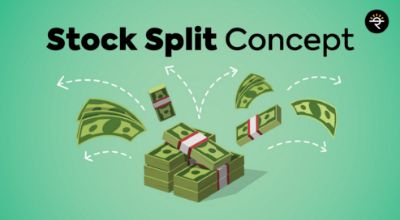Valentine’s day is around the corner and I am sure you have already planned a surprise gift for your loved ones. One more thing I am sure of is that CARR students will plan a financial gift for their loved ones. And when it comes to financial gifts, the first choice will obviously be shares. But before you gift shares to your loved ones, you must consider the costs associated with it in the form of charges and taxation.
1. Charges for gifting shares:
Let us say that I have decided to gift a few shares of different companies that I think are good to my husband. It will cost me 0.03% (of gift value) or Rs.25/-, whichever is higher. Additionally, GST @ 18% will be levied on the charges. The Gift charge is charged per company or ISIN. The following example will clear the doubts –
I have decided to gift shares of Jubilant Food Works, Bharti Airtel, and D Mart, before we go ahead let me be very clear that this is not a recommendation. So, the gift charges will be:

There are a few things to keep in mind while calculating the charges
i. The highest closing price of the stock between NSE and BSE is considered for computation
ii. The charges are computed by considering the highest closing price on the day the gift transaction is processed
iii. Charges are rounded off to two decimal places
So that is it about the charges. Now there is another cost involved in gifting shares and that is taxation. Let us see what do we have there.
2. Taxation on gifting shares:
As per the Income Tax Act, 1961 a “gift” can be in the form of money and movable/immovable property that an individual receives from another individual or organization without making a payment. In legal terms, the person or organization providing the gift is termed the transferor while the gift receiver is known as the transferee.
Simplifying the definition further, examples of gifts that are taxable in India include:-
i. Money received by cash, draft, cheque, bank transfer, etc.
ii. Immovable property such as land, building, residential/commercial property.
iii. Movable property such as jewelry, shares, ETFs, bonds, paintings, sculptures, etc.
Now that we know what can be said as a gift let us understand the taxes levied on the transferor as well as the transferee
I. Tax in the hands of transferor:
The transferor is not liable to pay any tax on gifts. As per the Income Tax Act, Capital Gains is charged on the transfer of a Capital Asset. But, section 47 specifically excludes ‘gift’ from the definition of ‘transfer’. Therefore, the transferor of a gift is not liable to pay income tax.
II. Tax in the hands of transferee :
A. On receipt of the gift
Section 56(2)(x) of the Income Tax Act, 1961 states that the Gift of movable property such as shares, ETFs, mutual funds, etc. received without consideration and exceeding Fair Market Value of more than Rs. 50,000 is taxable in the hands of the transferee as ' Income from Other Sources ' and tax should be paid at slab rates. This means if the gift amount is Rs. 50,001 then tax is to be paid on the entire Rs. 50,001 and not just Re. 1. Hope this point is clear. There are certain exemptions to it –
a) Gifts received from any relative. Relative here means:
a. in case of an individual—
i. spouse of the individual;
ii. brother or sister of the individual;
iii. brother or sister of the spouse of the individual;
iv. brother or sister of either of the parents of the individual;
v. any lineal ascendant or descendant of the individual;
vi. any lineal ascendant or descendant of the spouse of the individual;
vii. spouse of the person referred to in items (ii) to (vi); and
b. in the case of a Hindu undivided family, any member of the HUF; or
b) Gifts received on the occasion of the marriage of the individual; or
c) Gifts received by way of inheritance.
In the above three exemptions, there shall be no tax irrespective of the fair market value of the gift received.
B. On the sale of the gift
The subsequent sale of the gift by the receiver would be taxable under the head Income from Capital Gains. To determine the nature of capital gains whether STCG or LTCG, the holding period would be determined from the date of purchase by the previous owner i.e. the transferor till the date of sale by the transferee. To compute the capital gain, the cost of purchase by the transferor would be considered as the cost of acquisition.
I hope now you have got some clarity on the taxation of gifts. It can be confusing at times, so many people tend to simply ignore it. But, having an idea about taxation helps you take an informed decision. So, if you are planning to get a gift for your special ones this valentine’s day don’t forget to watch my valentine's day special video releasing on Saturday 12th February 2022 at 9:00 PM on my YouTube channel. Until next time!
















